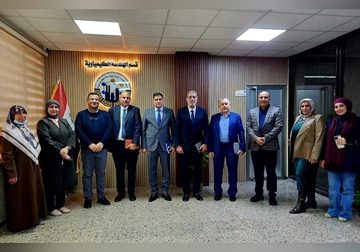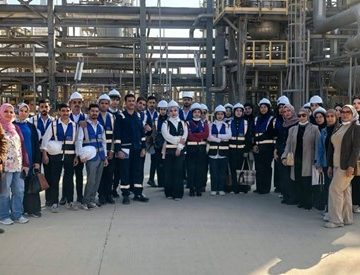الدكتورة سما محمد عبدالله التدريسية في قسم الهندسة الكيمياوية تنشر بحثاَ في مجلة مصنفة ضمن المستوعبات الاربع.
قامت الدكتورة سما محمد عبدالله التدريسية في قسم الهندسة الكيمياوية والحاصلة على شهادة الدكتورة من جامعة مانشستر في بريطانيا بنشر بحثها الموسوم
Understanding the seeding mechanism of hierarchically porous zeolite/carbon composites
في مجلة Microporous and Mesoporous Materials التابعة لدار النشرElsevier والمصنفة ضمن مستوعب Scopus. علما أن الدكتورة سما محمد عبدالله لديها ثلاثة عشر بحث منشور وسبعة بحوث منها منشورة ضمن المستوعبات الاربعة.
ملخص البحث:
يتناول البحث عرض طريقة جديدة في تحضير خلائط الزيولايت-كاربون ذات التركيب المسامي الهرمي بواسطة التحفيز الميكانيكي لسطح الحامل الكاربوني بأستخدام جسيمات متناهية الصغر (nanoparticle suspensions). حيث كان يعتقد ان الزيولايت المراد تحضيره يجب أن يضاف بشكل Seeds. لكن في هذه البحث تم دراسة تأثير الجسيمات المتناهية الصغر على بلورة الزيولايت والتي تعمل على تكوين شقوق في سطح الحامل لتقوم بدور مراكز تبلور للزيولايت. حيث تم أثبات أهمية وجود هذه الجسيمات أثناء التحفيز الميكانيكي بواسطة Ultrasonication مهما كان مصدر هذه الجسيمات.
Abstract
Recent research has demonstrated a new synthesis route for hierarchically porous zeolite composites by mechanical modification of the support surface using ultrasonication in a nanoparticle suspension. It was believed that target zeolites should be added as seeds for the sonication. In this study, the effect of nanoparticles was investigated with ultrasonication to understand the crystallization mechanism of zeolites obtained by the nanoparticles–assisted synthesis. It has been found that the nanoparticles under the influence of ultrasonication generate fissures or cracks as nucleation sites on the carbon surface. These nanoparticles such as zeolite A, γ-Al2O3, quartz and sand are different from the target zeolite X. Therefore, an amorphous aluminosilicate gel nucleates at those cracks during the hydrothermal treatment. Thus, the mechanical activation of the support surface is the process to induce the formation of strongly attached zeolite X over the template, not a seeding step. This is confirmed as an attachment due to the weak bond between the support and the zeolite for ‘non-seeded’ composites whereas the ‘seeded’ composites have a robust structure which maintains a zeolite coating upon mechanical agitation.
.jpg)
.jpg)







